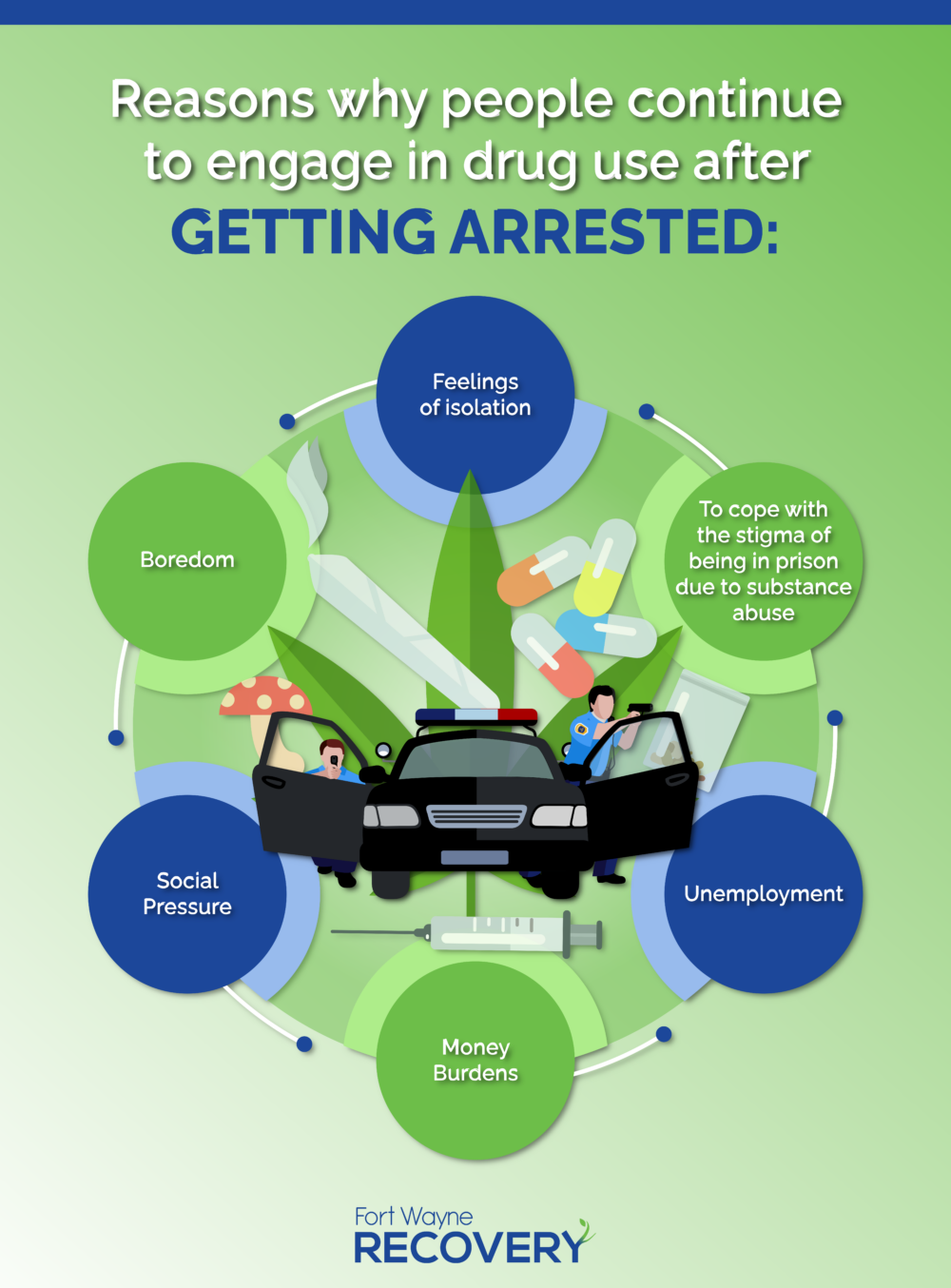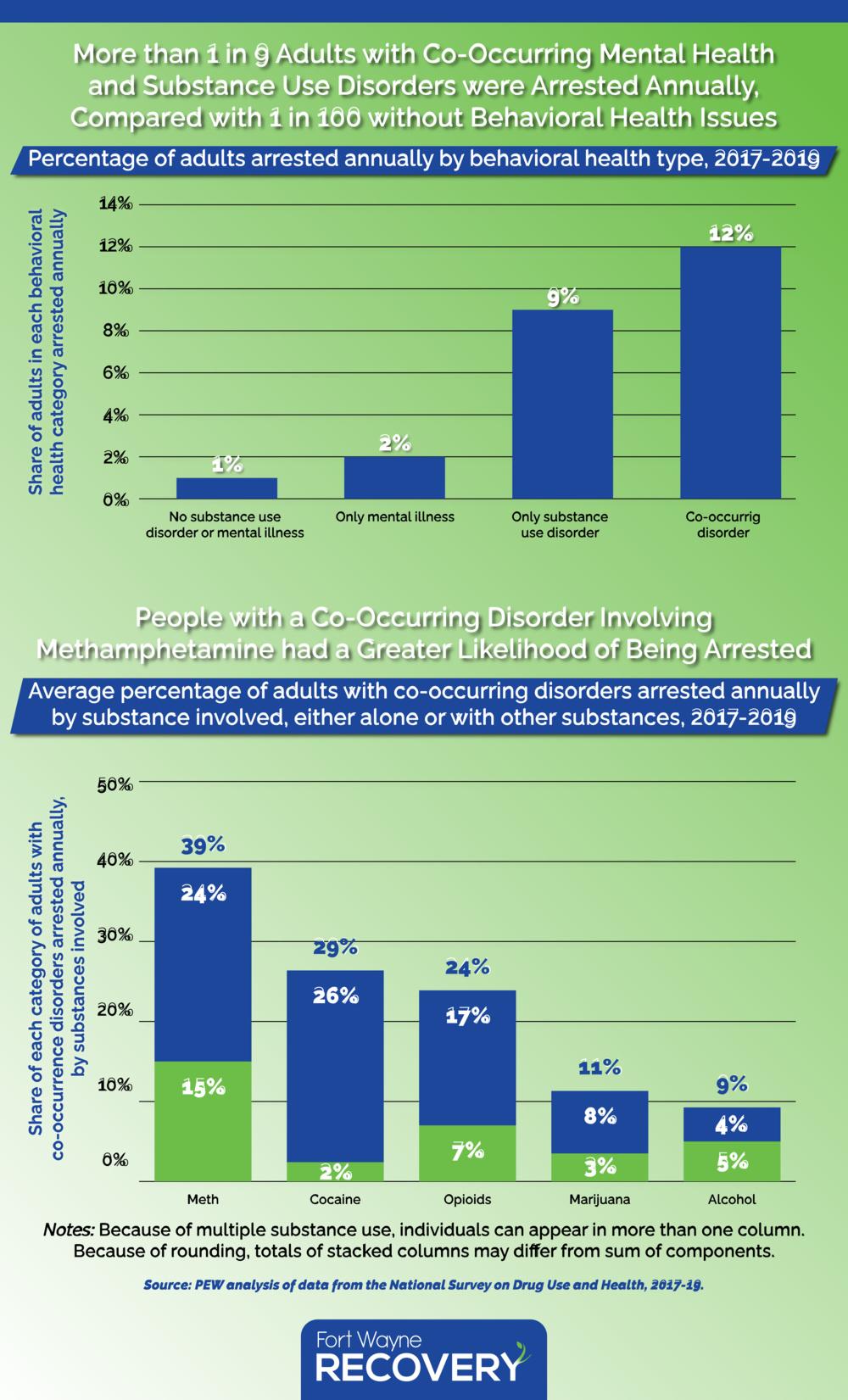Treatment for Substance Use Disorders Can Break the Cycle of Incarceration
Treatment for Substance Use Disorders Can Break the Cycle of Incarceration
It’s estimated that up to 65% of the U.S. prison population has an active substance use disorder. Many lawmakers have pushed for tougher drug laws to reduce drug-related incarcerations and repeat offenders. However, despite emphasizing tougher punishments for drug users, substance use disorders have remained high.
3Years
Within three years of being released from prison
67%
Arrested again on drug-related charges
When inmates with a substance use disorder are released from prison nearly 67% of these prisoners will be arrested again under drug-related charges within 3 years of being released from prison. The reason for this, say substance use experts, is because most of those people aren’t receiving any kind of treatment for their substance use disorder while incarcerated.

The True Cost of Drug-Related Incarcerations
At the time of their arrest, 36% of prisoners were using illegal substances and nearly 83% of state prisoners and 73% of federal inmates have a history of illegal substance abuse. Only a small amount of them receive any kind of treatment for their addiction. This creates a revolving door that is both taxing on the United States justice system and costly to taxpayers. This is evident in states like Kansas which recently passed legislation that provides treatment to inmates in their state prisons after they experienced an increase in drug-related incarnations that cost the state $84 million in 2019.
The True Cost of Drug-Related Incarcerations
At the time of their arrest, 36% of prisoners were using illegal substances and nearly 83% of state prisoners and 73% of federal inmates have a history of illegal substance abuse. Only a small amount of them receive any kind of treatment for their addiction. This creates a revolving door that is both taxing on the United States justice system and costly to taxpayers. This is evident in states like Kansas which recently passed legislation that provides treatment to inmates in their state prisons after they experienced an increase in drug-related incarnations that cost the state $84 million in 2019.
Sergeant Mark Gerardot of the Fort Wayne Police Department says that when he became a police officer, he had a tough-on-crime approach and believed that people arrested for illegal drug possession should serve jail time but his views changed. “After putting people in jail for a few years, I started feeling that jail wasn’t the solution to our drug problem,” says Gerardot. “I wanted to get those people into treatment for their substance use disorder so that they didn’t keep overdosing and ending up in jail which is the only way we’re going to be able to break the cycle.”
Research shows that treatment for substance abuse disorders, particularly behavioral health counseling, can reduce drug use and drug-related criminal behavior. According to one study, the average prison time for a drug offense costs $26,188, compared to $3,143 for substance use treatment. Not only is treatment a more cost-effective use of taxpayer dollars than prison – it’s also more effective. Instead of wasting millions of dollars, North Carolina lawmakers lowered sentence lengths for low-level drug-related offenses and increased access to addiction treatment. This resulted in a 25% drop in prison admissions and an overall decline in reported crime by 29% from 2011 to 2019. It also saved taxpayers $543 million.
Dual Diagnosis Treatment During Incarceration Tackles Co-Occurring Disorders
Mental health issues and substance use disorders go hand-in-hand and are also referred to as co-occurring disorders. Adults with co-occurring disorders made up 2% of the U.S. population but 15% or 1 in 7 of everyone who was arrested from 2017 to 2019. Almost half of these individuals were arrested on substance use-related charges. The reason for this is left untreated, behavioral health issues often fuel substance use disorders. Whether it’s untreated trauma, social anxiety, depression, or a personality disorder, people from all walks of life turn to drugs and alcohol to cope with their mental health problems. Advocates say that providing behavioral health services to inmates while their serving time can start them on the path to recovery from their addiction and keep them out of jail in the future.
“53% of Indiana inmates have been diagnosed with a substance use disorder”
Recovery Works, Indiana state’s forensic treatment program
The state of Indiana recently launched a pilot program at 5 county jails throughout the state that provides inmates with a dual diagnosis approach to treat substance use disorders and reduce the number of re-offenders.
“The first three steps an individual takes upon exiting the justice system are often the most important steps they will take in their recovery journey,” Douglas Huntsinger, executive director for drug prevention, treatment and enforcement for the state of Indiana. “Regardless of how an individual ended up in the justice system, how they move forward matters.
By providing access to peers and wraparound services while individuals are incarcerated, we intend to reduce recidivism and future involvement in the justice system.”
Creating Better Outcomes for Everyone
Gerardot believes the best way to keep people out of jail for illegal drug use is to approach the issue comprehensively. “The only way we are going to solve this problem is by getting input from all sides,” says Gerardot. “If we can tackle addiction from different angles that’s when we can fix problems. We’re not going to save everybody but we’re going to be able to save a lot more people and reduce drug-related incarcerations if we change the way we approach this issue.”
Data regarding treatment is promising. In a meta-analysis of almost 50 studies opioid-related interventions before, during and after incarceration decreased opioid-related overdoses and deaths, reduced opioid use during and after incarceration and improved retention in substance use disorder treatment after people were released from prison.
Nate Moellering, a community outreach coordinator at Allendale Treatment and Fort Wayne Recovery has been in recovery for his substance use disorder for over 6 years and was persuaded by Gerardot to start treatment for his addiction shortly after overdosing. “Instead of taking me to jail after I overdosed for the second time in 24 hours, officer Gerardot convinced me that my life was valuable and that I should go to treatment,” says Moellering. “I don’t think I’d be alive if he had just taken me to jail. When you can convince someone who’s been in jail with a substance use disorder to get help you don’t just save the person – you save their family, you reduce store thefts, you prevent child custody cases from occurring and you reduce loss of workplace productivity. There’s the human impact, the financial impact, and the impact on society as a whole. We don’t think about the greater impact of just saving one person. It’s a trickle-down effect and leads to a better outcome for everyone.”


